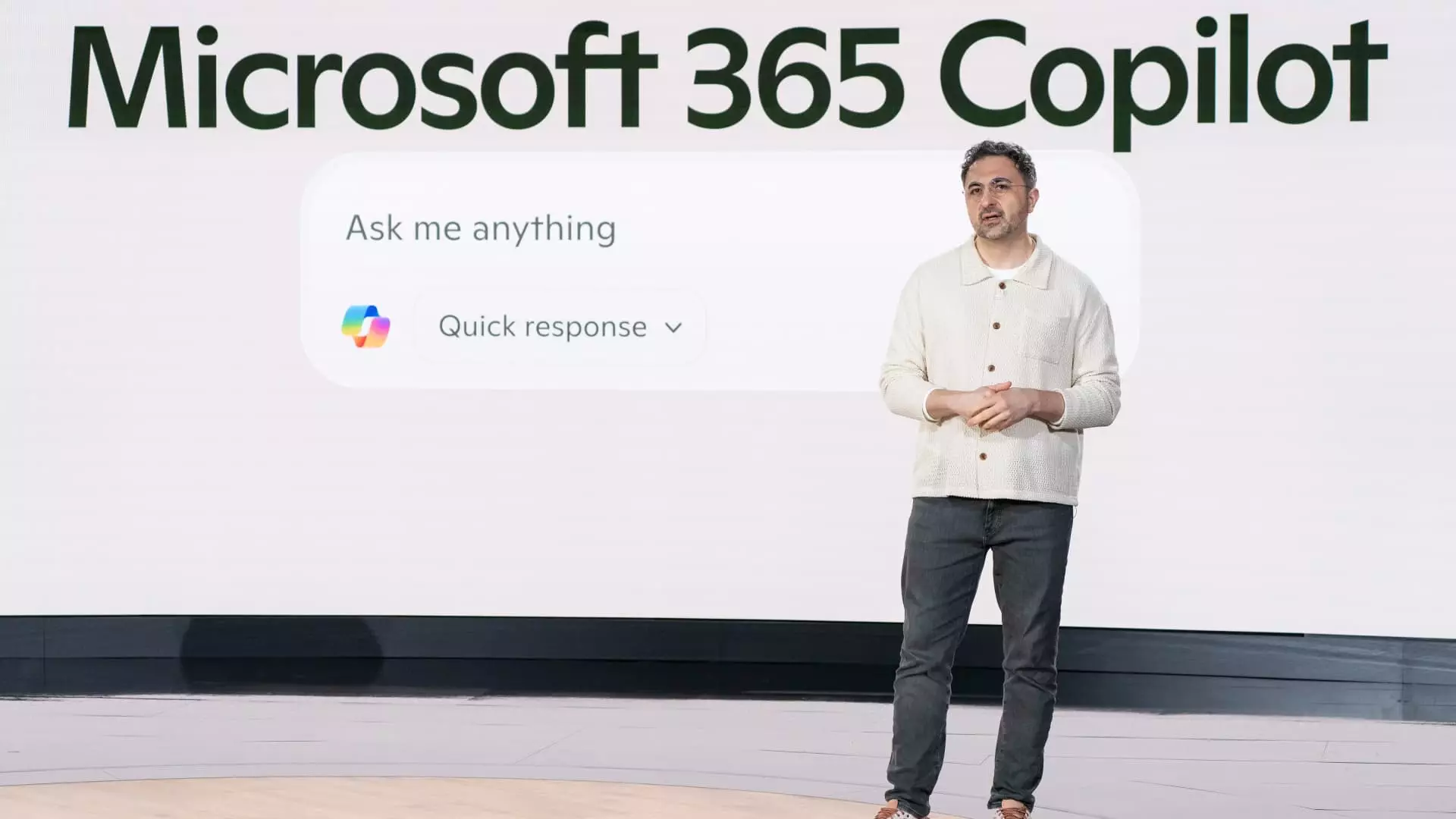Microsoft’s approach to artificial intelligence (AI) development reveals a tactical brilliance that may not immediately resonate with the hype-driven pace of the tech industry. Rather than rushing headlong into the creation of cutting-edge AI models, the company is opting for a more deliberate strategy under the guidance of Mustafa Suleyman, its CEO of AI. In a recent conversation with CNBC, Suleyman laid bare an unexpected rationale for this strategy: by allowing the initial competition to advance their technologies by “three or six months,” Microsoft can harvest the benefits of from their pioneering efforts, while significantly lowering costs. This “off-frontier” approach highlights a nuanced understanding of both market dynamics and technical capabilities, and places Microsoft in a potentially stronger position to meet specific user needs.
In an industry where speed is often glorified, Microsoft’s strategy may initially seem counterintuitive. However, the agility to adopt and adapt emerges not from a breakneck pace but instead from a reflective stance that anticipates use-case demands—tailoring AI models that resonate with real-world applications, ultimately benefiting end-users. By waiting, Microsoft can avoid the pitfalls of early mistakes, aligning their innovations closely with user experiences that have already been catalyzed by initial competitors.
Navigating Collaborations and Market Relationships
Historically, strategic partnerships have been essential for Microsoft’s growth in the AI sector. The company’s relationship with OpenAI stands out as particularly pivotal—having invested a staggering $13.75 billion since the inception of their alliance. This partnership, although foundational, is beginning to show signs of strain. OpenAI’s recent initiation of collaboration with Oracle on a substantial project reflects the competitive tension that now resides in Microsoft’s otherwise closely-knit ecosystem.
Nonetheless, Suleyman emphasizes that while Microsoft’s path forward is rooted in collaboration—leveraging AI models from OpenAI and computational resources from other partners such as CoreWeave—the organization’s long-term objective is a self-sufficient and sustainable approach to AI. The reliance on external entities might raise eyebrows, but it’s imperative to recognize that such partnerships also enable Microsoft to concentrate on its internal capabilities and cultivate a formidable home-grown AI infrastructure.
Transformative Innovations through Incremental Improvements
An equally fascinating piece of information from Suleyman’s discussions is Microsoft’s evolving plan for its applications, exemplified through the introduction of “memory” features in Microsoft’s Copilot. By retaining key facts about users, the Copilot aims for a higher level of personalization. For a company that leans into AI technologies, these incremental innovations can elevate user engagement and significantly enhance the experience within products like Bing and Windows.
Moreover, this isn’t merely an imitation of OpenAI’s groundbreaking ChatGPT functionalities; rather, it reflects an adaptation that highlights Microsoft’s distinctive value propositions. By blending technological competency with a focus on user-oriented features, Microsoft reclaims its narrative in the AI discourse, ensuring it is not merely a follower but a meaningful contributor to the evolving landscape of AI tools.
Prospective Landscape of AI and Beyond
The overall landscape of AI and its implications for various sectors going forward appears overwhelmingly promising as Microsoft keeps its eye on the horizon. As Suleyman posits, the ambitions of the company will unfold over an extended period. Looking ahead to 2030, this foresight enables Microsoft to explore innovations that resonate deeply within larger frameworks of society and technology—considerations that go beyond immediate trends. Instead of racing toward new peaks, the company is focused on building robust foundations.
The distinction of not necessarily developing the best in class model immediately does not dilute Microsoft’s impact on the AI landscape. Instead, it creates an arena for deep learning, understanding user behavior more intimately, and crafting responses that are as intuitive as they are intelligent. This represents a maturity in strategy that could eventually yield more sustainable successes in AI.
By shaping a strategy that focuses on the fusion of external partnerships and internal innovation, Microsoft is redefining what it means to thrive in the AI arena. In an age where speed often overshadows thoughtfulness and pragmatism, Microsoft’s commitment to strategic resilience could very well lead the way for a new era of technological advancement.


Leave a Reply